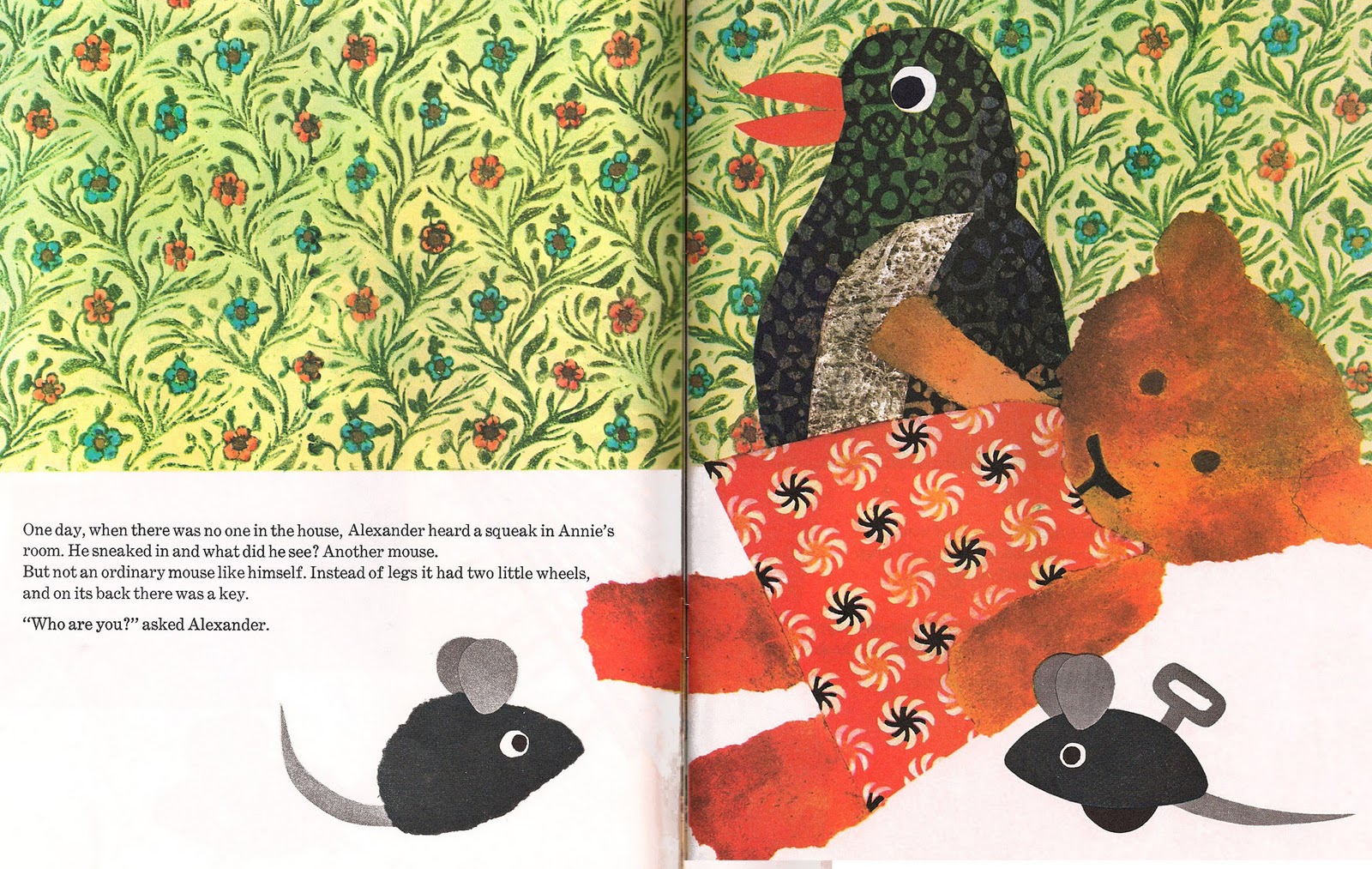

Lionni’s simple yet bold illustrations capture the pathos of the story. In November of 2012, contemporary blogger Vivian Kirkfield wrote, “Mr.

The decision to use an animal as his main character allows the book to address universal themes that can apply to any reader, and the message of the book is what continues to resonate with readers. Lionni’s use of collage as a medium stands the test of time through it's simplicity and it’s ability to inspire young artists to replicate it. Because of the book’s popularity, multiple publishers around the world continue to put out Alexander and the Wind-Up Mouse almost yearly. Lionni’s work continues to be included in elementary school reading lists, curriculum guides, and craft books. This is likely due in part to Lionni's popularity and overall reputation, and his work has become recognized as a standard among the world of children's literature. “His story, like Fredrick’s, is a simple one with an obvious message the pictures, apart from the overly whimsical mice, are worked in beautiful, imaginative collage.” Though these reviews disagree on the faults in Lionni’s work (either a dislike for the collage or the mice themselves), both reviews reveal the comparison to Fredrick in the initial reception of Alexander and the Wind-up Mouse.Īlexander and the Wind-Up Mouse has made its way into the cannon of children’s literature and is still one of Lionni’s most popular children’s books. Lionni's most felicitous picturizations: the two mice pale against textures and patterns that have nothing to do with their situation, the modest domestic drama being diminished rather than enhanced by the decor.” This initial reception touches on readers’ desire to have more of Lionni’s mice after Fredrick, but a mere seven months later The Horn Book Review compared Fredrick and Alexander. The 1969 Kirkus Review found fault in the collage reading, “It's a happy solution but not one of Mr. Perhaps the release of Fredrick just one year earlier caused the critical, yet generally positive reviews. Despite the critics’ affection Fredrick, some prominent reviewers were unsympathetic towards Lionni’s use of collage and his mice.

The book was Lionni’s second installment in his books about mice that would later become his trademark in the world of children’s literature. Leo Lionni’s award winning Fredrick paved the way for the Alexander and the Wind-up Mouse to be an instant hit among readers.


 0 kommentar(er)
0 kommentar(er)
